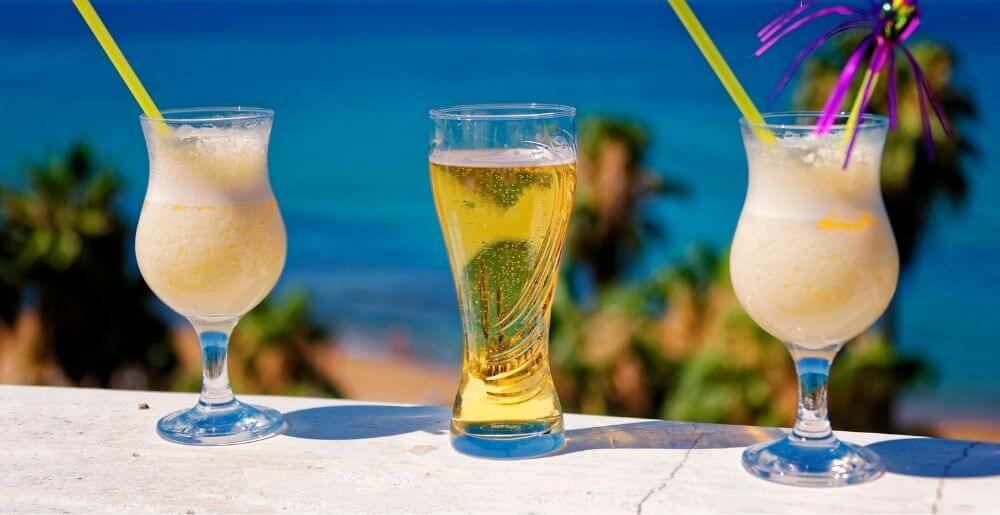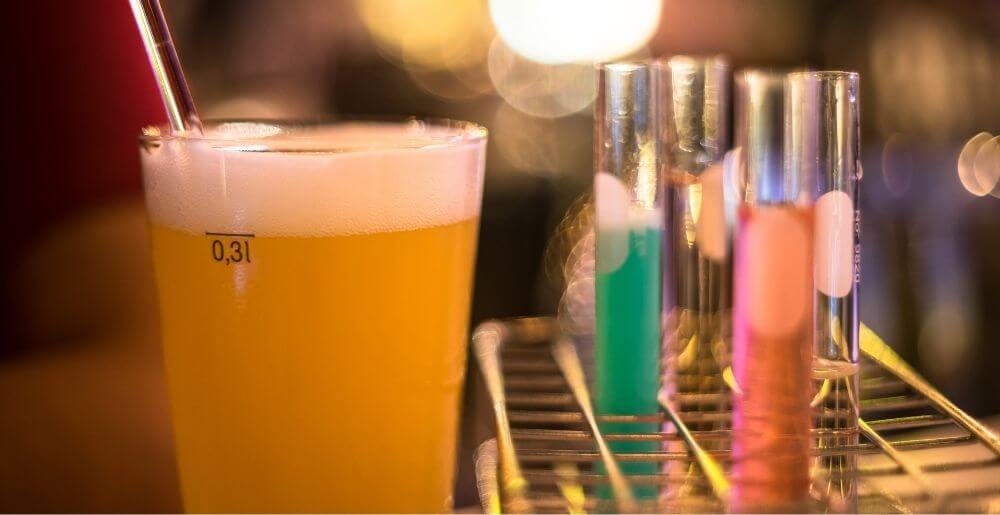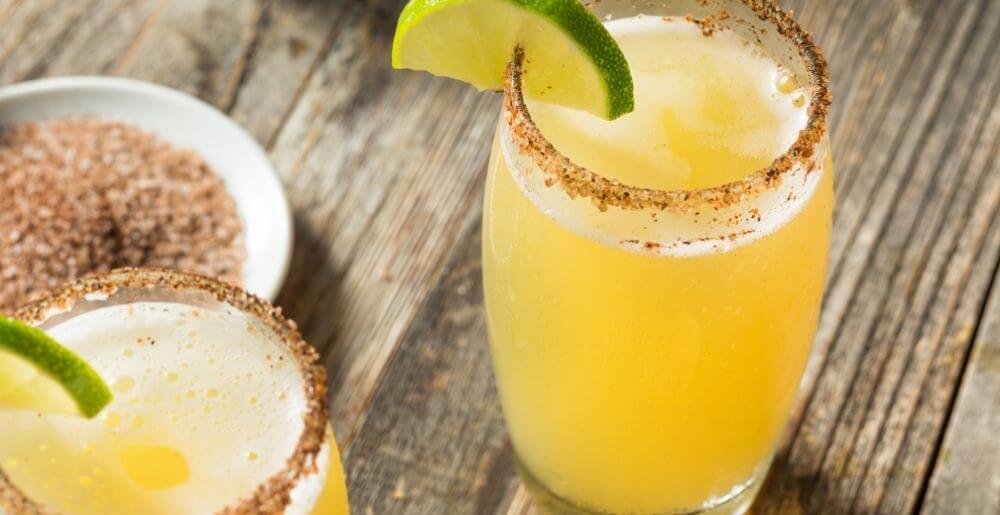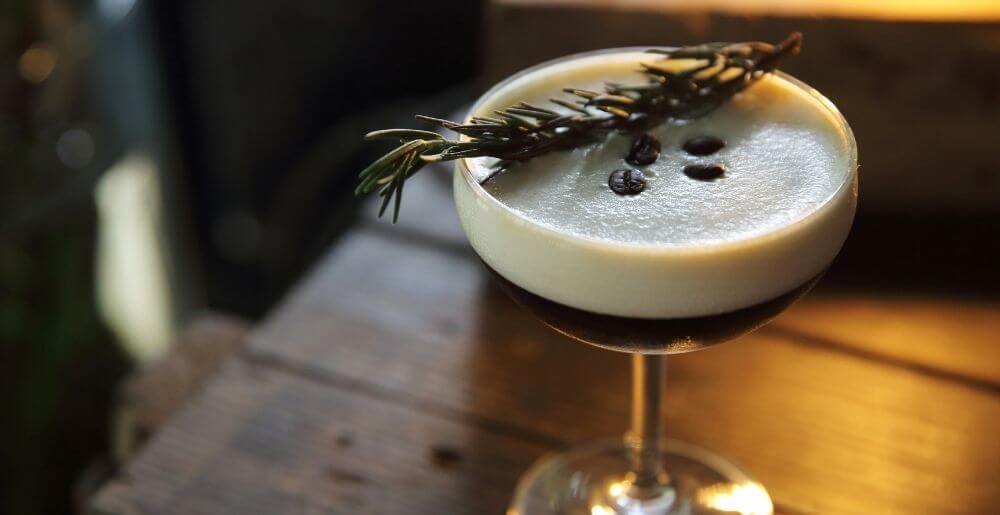For those who are all too familiar with a classic Margarita or Manhattan, the idea that you can use beer in cocktails can come as quite the surprise.
Not only will spirit enthusiasts scoff at the notion of trying to mix beer with their favourite whisky, gin or vodka, craft beer purists will likely question your sanity for trying to blend away the already wonderful flavours found in many examples of craft ales or lagers.
That being said, there is much to be gained through using beer in cocktails, especially when you consider just how wide the world of craft beer has become in recent years, with new styles seemingly coming out every month.
To help you to understand just how good beer cocktails can be, we’ve put together this quick and simple guide on the subject where we touch on some of the most important points, including what are the general rules and principles around mixing beer into cocktails, what styles of beer and mixers work best, and finally, what some of the most popular recipes are.
Read on to give your weekend drinks and mixology skills the flavoursome kick that they both so badly need.
The Dos & Don’ts of Making Beer Cocktails

Before we jump right into mixing and stirring, let’s first lay out some of the most important ground rules on what you should and should not do when using beer in cocktails.
Rule One: Do Not Shake
An extremely simple rule, it is nonetheless a very important one to follow, especially if you’re not looking to have a horrendous mess to clean up.
The reason why beer should not be shaken, even if it is poured into a cocktail container first, is that most beer is carbonated and as with all carbonated beverages, violently shaking them will cause the liquid inside the container to explode once it is opened.
Rule Two: Do Not Mix with Creamy Liqueurs or Spirits
Though you might be tempted to mix a cream liqueur like Baileys or Frangelico with a rich style Porter or Stout, these types of liqueurs simply just do not mix well with any amounts of carbonation, which is practically in every beer.
Not only will they not mix well together, the final drink will likely end up looking like curdled milk that has been left to sit in the open for a few days, something no one wants to visualise, let alone drink.
Rule Three: Don’t Overuse the Spirit
Whilst some very particular recipes might call for a more level or even greater concentration of spirit over beer, it is generally advised that at least three quarters of your drink should be beer when mixing with spirits.
Put simply, this is because the higher levels of alcohol contained in many spirits can easily have a dramatic affect on the taste of the final drink, with it sometimes reaching unbearably harsh levels if too much of a spirit is used, particularly if it’s one of a low quality.
Rule Four: Complement Rather than Contrast
What this rule basically means is that you should never seek to try and mix extremely contrastingly flavoured beers, mixers, or spirits together and instead focus on finding those that align somewhat closely in their taste.
For two specific examples, you shouldn’t be mixing sweet syrups or mixers with a piney and intensely bitter IPA or adding citrus or herbal mixers or spirits with a sweet or bitterly roasted dark beer.
In the world of beers and cocktails, complimentary flavour matches work best, with only a few notable exceptions, including dark beers and hot spice.
What Styles of Beer & What Mixers Work Best Together?

Now that we’ve covered our bases and learnt what not to do when using beer to make cocktails, let’s move on to what some of the best mixing combinations are.
Combination One: IPA or Pale Ale with Fruit Liqueurs or Gin
IPAs and Pale Ales are both styles of beer that are known for their distinctly hop-forward flavour profile, with often plentiful amounts of citrus, pine, herbal, or tropical fruit flavours shining through behind a sometimes moderately heavy backbone of caramel malt.
As you might then imagine, both of these brews are usually a perfect match with many bottles of fruit Liqueurs or even Gin due to the complimentary flavour profiles typically found in all of these beverages.
Bear in mind, however, that not every type of fruit Liqueur will work and it is mostly citrus-based ones, such as Limoncello or Cointreau that tend to work best.
As a final general reminder, it also advised that you use only relatively small amounts of Liqueur or Gin in comparison to beer as using too much of either can make the final mixed drink far too alcoholic in its taste.
Combination Two: Lager or Pilsner with Lemon or Lime Soda or Lemonade
For those who are already familiar with a classic Shandy or Radler, the idea of mixing a classic Lager or Pilsner with lemon or lime soda or lemonade is a very familiar concept.
The reason that these two styles of beer work so well with either mixer, however, is that both of these brews are typically rather light in their taste and possessive of an often clean and crisp flavour profile that is followed up by minimal to no amounts of hop or fruit flavour.
This makes them wonderful partners with either one of the previously mentioned mixers, especially when both are combined and served ice cold on a hot day.
Combination Three: Porters & Stouts with Coffee or Chocolate
Considering just how many people will describe tasting chocolate and coffee within their favourite Porter or Stout, it’s not then much of a stretch to imagine just how great it can be when these brews are combined with straight coffee or even a chocolate liqueur.
Care must be taken, however, to ensure that no cream or milk coffee or chocolate liqueurs are used as these never work well with the carbonation found in most beers, even ones that use nitrogen instead of regular carbonation.
Beer Cocktail Recipes
Having covered everything there is to know about what mixing combinations work best and which ones should be avoided, it’s now time to consider what some of the best beer cocktails recipes are.
Recipe One: Shandy or Radler

Actually two different cocktails, they’re often grouped together because of just how similar they are, with both being separated by only one ingredient.
Shandy Recipe
Ingredients:
- Lemon or Lime Soda
- Lager or Pilsner
Instructions:
- Fill tall glass halfway with beer & halfway with lemon or lime soda
- Stir using a mixing spoon
Radler Recipe
Ingredients:
- Lemonade
- Lager or Pilsner
Instructions:
- Fill tall glass halfway with beer & halfway with lemonade
- Stir using a mixing spoon
Recipe Two: Michelada

A recipe that originates in Mexico and which can have slight variations on ingredients depending on the preferences of the person making it, this recipe is one of the easiest variations of the beer cocktail.
Ingredients:
- Lime juice
- Sea salt
- Lager or Pilsner
- Worcestershire or Tabasco sauce
Instructions:
- Coat the rim of a tall glass with lime juice first & salt next
- Pour lager most of the way up the glass
- Top the glass up with lime juice & add a few drops of sauce if desired
Recipe Three: Guinness Martini

Though Guinness is the recommended beer of choice for this particular recipe, most other examples of stout or dark beer will also work fine.
Ingredients:
- Dark Rum
- Ice
- Cold espresso coffee
- Vodka
- Crème de Cacao Liqueur
- Stout Beer
Instructions:
- Pour 50mls of rum into a glass with ice add a cold espresso shot of coffee on top
- Add a 25mls each of vodka & cocoa liqueur before finally adding 100mls of stout beer
- Stir gently until well mixed & garnish with a few coffee beans